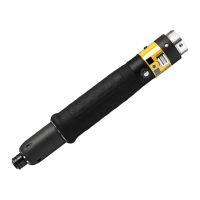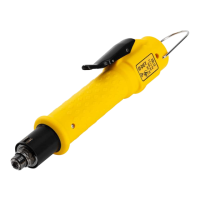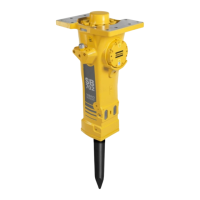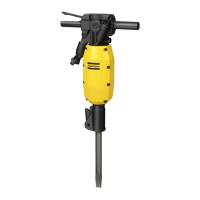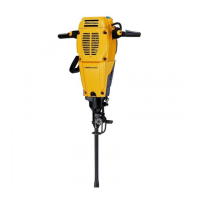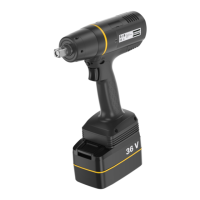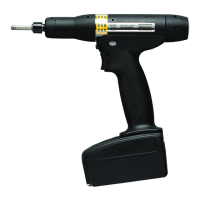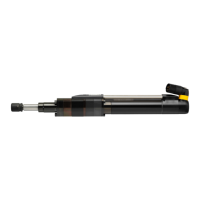Set Up and Maintenance
194 9836 3521 01
Double torque transducer
Spindles are calibrated as follows:
Read the result from both transducers in the “Single run” window. The monitoring transducer is the one
that the torque results to the reporter(s) come from.
The monitoring transducer is the one that the torque results to the reporter(s) come from.
The control transducer is calibrated in the same way as a single transducer (see Single torque transducer
above).
The monitoring transducer can be calibrated at the same time by adjusting the scale factor for transducer
2.
4.17.3.3 Angle
The angle measurement is performed with the resolver signal and is normally not necessary to calibrate
(see “wind up” below) as all this is hardware.
The most reliable results are achieved with an inline Torque/Angle transducer and a Torque/Angle
amplifier with trace capability, for example an Atlas Copco IRTT transducer with ACTA.
There are two methods of checking the angle measuring.
1. Rotating the spindle in the air. Program a set angle value in the “Test Bolts”-“Single run” menu.
Connect your inline transducer and run. Compare the inline transducer angle result with the
PowerMACS one.
2. Running on a joint. With this method, a check of the tightening angle is difficult but not impossible
to make in a controlled way. Make a tightening on a joint and compare the trace curves, Torque vs.
angle, from the two systems.
Results from tests made with an external Torque/Angle recording unit where the angle from a torque level
to final torque is presented and then compared with the from PowerMACS reported value are normally not
giving an acceptable result.
The main reasons for the discrepancy in measured angles are:
The start point (torque level) does not occur simultaneously in the control and the monitoring
systems
The stop point is not defined in the same way in the control and the monitoring systems.
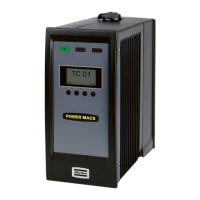
